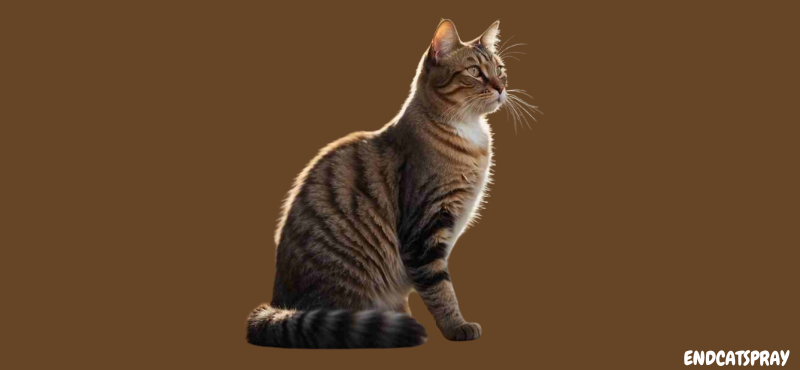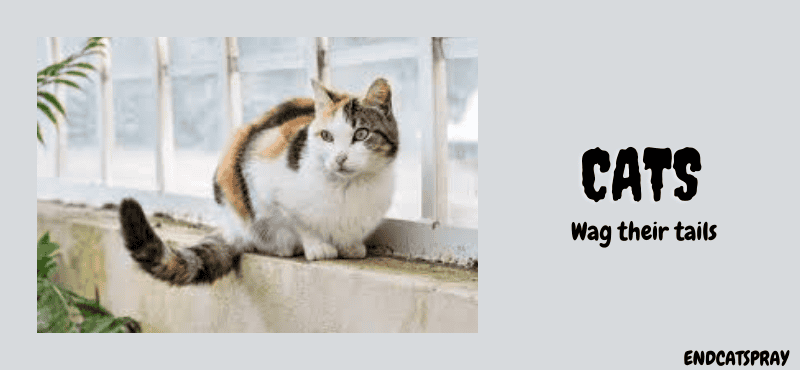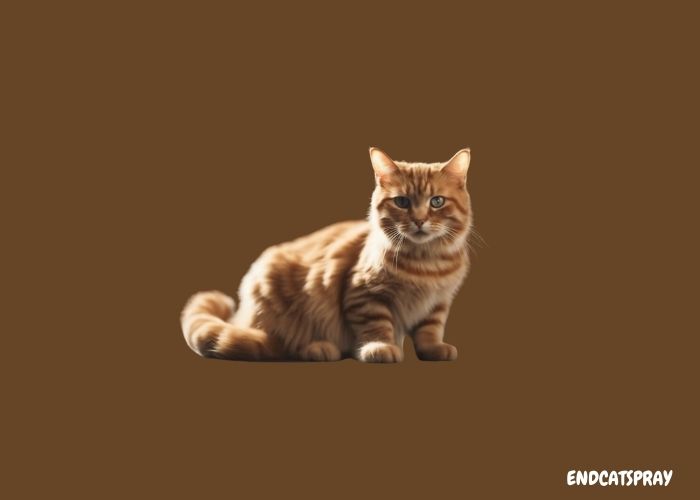Our cute little feline friends are not only lethal hunters in nature but also very social and like to know their environment and the creatures living in it. When it comes to communication skills, they speak with their body more than their mouth. Cat owners wonder why do cats wag their tails while lying down. They are known to have a very complex tail language as well and we will today unlock the hidden signals behind their complex tail language.
- While these little creatures are happy, they would definitely roll around and swish their tails in happiness.
- While twitching their tail, cats exchange the scents in the environment with their own smell.
- When they are confused, they might wave their tails and purr at the same time.
- Cats swish their tails while playing and fighting because of their heightened energy and alertness.
Cat’s Tail-language Why Do Cats Wag Their Tails?
Whenever you see a cat waving its tail, it can be a sign of mixed emotions, or it is alerted to something around. One common reason for wagging tails in cats, while they are lying down, is frustration and irritation. As we know, cats communicate through their tails as well, so we cannot conclude if it is a specific signal.
It depends upon various conditions and environmental factors that we will describe in the coming context. Overstimulation of something can be the main reason why cats swish their tails and lie at the same time.
One of the most common questions related to Cats waving their tail is: What is your cat trying to say? This wagging of its tail can mean it is either a little annoyed by something or it’s overstimulated and wants to have some space or lonely time for itself.
Sometimes, it can also mean that our feminine friends have loads of energy and want to play even when they are lying down and pretending to rest.
What Does it Mean When A Cat Waves Its Tail? (Cat Feels)
Tail movements tell a lot about a pet’s emotions. Cats and kittens usually swish their tails when they are going through one of these three emotions:
- Angry / Annoyed
- Scared
- Happy / Playful
It is important to quote that we should not be too worried about our cat’s health before we learn to read our cat’s tail language, as tail wagging is rarely related to any medical emergencies.
Reasons Cats Wag Their Tails While Lying Down:

Cats wave their tails for various reasons, reflecting their instincts and complex behavior. The following are the most common reasons why a cat would wave its tail while lying down.
1. Tail to express attention Seeking:
When you come home and see your cat lying down, do not worry—your cat is happy. The desire to bond socially is a very common reason why cats show such behavior. After being neutered, the cats are no longer in a race to find an opposite gender to mate, so they focus more on making bonds with the owner and other friends and show these gestures to show trust and friendship.
2. Happiness and contentment:
Cats are extrovert pets; they mostly show if they are angry or happy and use their tails to tell cat owners what they feel when they feel like it. While these little creatures are happy, they would definitely roll around and swish their tails in happiness and try to show it to their owner or any other cat, who is the main reason for their happiness.
3. Means of Communication:
Communication is one of the integral parts of the cat’s social life, and wagging is one of the most effective ways of communication among cats.
Waving their tails while they lay down on the ground is one of the effective ways of telling their friends that they want to carry on this friendship and are happy to meet them.
They also show whether they are scared or unsure by waving their tails while lying down in a slightly different manner.
4. Scent Exchange:
Cats are known to smell everything around. They have a powerful sense of smell, which helps them track changes in the environment. While twitching their tail, cats exchange the scents in the environment with their own smell.
5. Balance:
Our Feline friends are often seen balancing themselves in an upside-down position while twitching their tails. The wagging of their tails provides extra support to balance themselves in the lying position.
6. Playfulness and Activeness:
The anticipation of playtime can make your Feline friend wave their tail while they lie down. If they want to have a good social interaction with their owner and want them to play with it, they will show it with this wagging of their tail. They express the excitement of playing with other pets and owners with this cute gesture.
7. Discomfort and Irritation:
If you see your cat is stressed and wagging its tail while she is lying down, don’t do anything. She might have some kind of itching or irritation that makes her go back and forth and wag her tail.
8. Alert and Vigilant:
Sometimes, when our feline pets sense something odd in their environment, they might show it in a way that makes it look like they are flicking their tails in a lying position. They are alert and vigilant and are capable of sensing the change in the environment and are very alert at that point.
Why do Cats Wave their Tails While Purring:
It is very important to know the cat’s emotions and the outcomes of the feelings, such as purring while they wave their tails. It seems like a contradiction of feelings, but it is a complex sign language.
Following are some common reasons why cats might combine the tail-wagging behavior with purring.
Contentment with Focus:
It means that they are happy but at the same time alert and know what’s happening in the surroundings.
Enjoyment with a little Irritation:
It means that they might be enjoying themselves, but they are overstimulated.
Multiple Emotions:
When they are confused, they might wave their tails and purr at the same time, usually When they are happy and confused at the same time or even a little angry.
Comfort and Anticipation:
While they show this behavior, we can think of the reason that they are very comfortable. It can happen when you provide your Feline friend with food or it’s playtime.
Why do Cats Move the Tip of their Tail :

Cat’s tail is very flexible, and it is capable of showing emotions with its body language. Mild agitation and focused attention are the two basic reasons the cat’s tail may move from the top. Cats are very agile hunters and like to catch prey with attention and focus. If you see them wagging the tip of their tail, you can conclude that they are about to catch something like prey or a toy. When you see the tip of the tail moving know that the cat is feeling attentive and should not be disturbed.
Why do Cats Swish their Tails When Play Fighting:
Cats swish their tails while playing and fighting because of their heightened energy and alertness. Playfighting combines real hunting behavior, so cats need to act alert and show readiness, which is why they swish their tails when they playfight.
Types of Wagging Motions and Meanings:

- The low flick: Sometimes, our pet cats want some space, and that’s why they show it with a low flick tail wagging behavior.
- Low Wagging: A low wag is often seen when the cat is under any stress or is scared of something around it.
- Slow Swish: Slow and soft wagging is a sign that your Feline pal is at peace with the world and content with life.
- Quick Swish: The quick swishing of cats and kittens is a sign of being playful. It is often confused with anger but is not.
- Quick Twitch: Quick Twitching often taken as playing and hunting action. This behavior is also a sign of our cats being mildly irritated.
- The Quiver: If you notice your pet Tom or Queen is showing this behavior, it means they are happy to see you and they are greeting or welcoming you this way.
- Wrapping Tail: The Quiver followed by Wrapping the tail is also a sign of the welcoming nature of cats. They wrap their tails to exchange scents in order to greet their owners.
- Fluffed up Tail: A stuffed-up tail is a cat’s defensive mechanism that makes it look scarier and bigger.
- The Sleep twitch: The Sleep twitching method is applied when a cat wants you to know that they are aware of the situation. They often Sleep and twitch their tails to tell the other creatures that they are not fully defenseless.
Why do Cats Twist their Tails When Resting?
One of the commonly asked questions from Pet owners is: Why does my cat flick her tail while lying down? The answer is very simple: She usually indicates her alertness to the changing environment. It can signal curiosity about a new thing, Mild irritation, or something interesting in the surroundings. Cats, even when they are resting, are aware of the situation; even if a slight movement is made, they become vigilant.
If you see a stray cat is lying and when you move near it, it will also wag its tail; that simply means it knows you are around and may cause harm. In previous cases, a stray cat may harm you if you keep disturbing it. Cats also wag their tails to inform the boundaries of the intruder, so we should be informed about the type of tail moment in dealing with stray cats.
How do You tell if Your Cat Loves You?
There are many affectionate behaviors of cats that let the other know if he or she loves you. Following are some of the most common gestures that show that it loves you and is happy to be around you:
- Purring and staying side to side
- Rubbing against you or another cat
- Head butting or Bunting
- Knead on you
- Slow blink
- Bringing You “Gifts”
- Cat wagging its tail (Specific Cat tail wagging)
Conclusion:
In this blog, we explained all the possible reasons why do cats wag their tails while lying down. There are different meanings to different styles of flicking their tails, and it is easy to understand what our feminine friends want if we learn the tail language of our little pet mates.
References:










